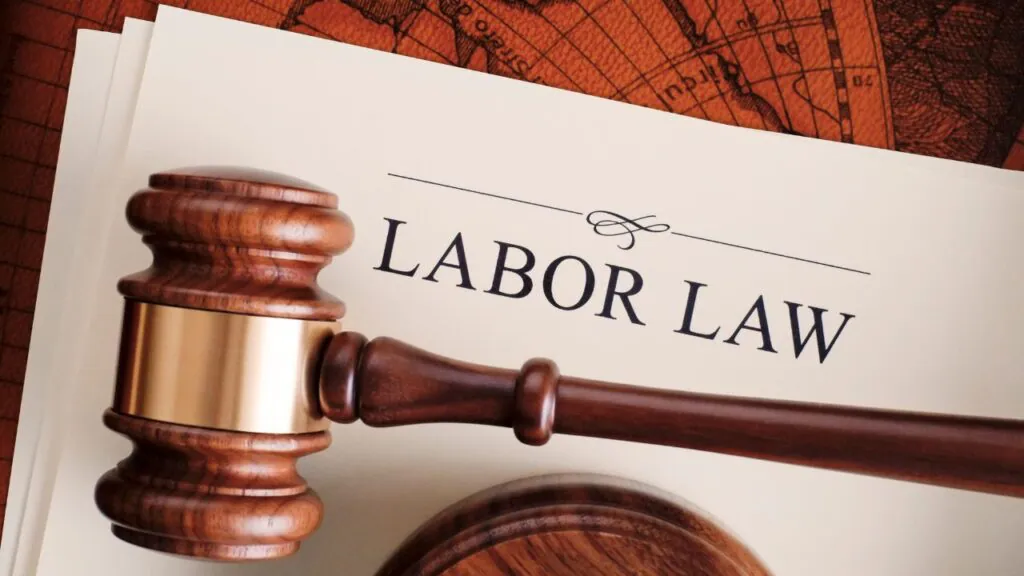In an increasingly interconnected world, the rights and protections of workers no longer exist in isolation. A labor strike in the U.S. can disrupt supply chains in Vietnam. A new labor code in India can influence garment pricing in Europe. And a migrant worker protest in Qatar can spark global debates about human rights in sports.
As of 2025, most countries have signed onto international labor standards set by organizations like the International Labour Organization (ILO) and the United Nations Sustainable Development Goals (SDGs). On paper, workers across the globe are supposed to enjoy the right to unionize, access fair wages, and be protected from exploitation. But does reality match the rhetoric?
In this article, we examine the state of labor laws in ten diverse countries—from industrialized nations to fast-growing economies and labor-exporting regions. We analyze how governments legislate work, where protections fall short, and how well countries enforce the rights they proclaim.
From Germany’s model of codetermination to Bangladesh’s fragile garment worker protections, this country-by-country breakdown reveals which systems are leading, lagging, or merely surviving. With automation, informal labor, and gig work rising, the question becomes urgent: Are current labor laws built for the realities of today—or relics of a bygone industrial age?
This is more than a legal comparison. It’s a global checkup on the state of worker justice.
Global Standards and What to Measure
Before we compare countries, we need a common lens. What does a truly protective and fair labor system look like in 2025?
According to the International Labour Organization (ILO), the foundations of strong labor laws include:
- Freedom of association – the right to form and join trade unions
- Collective bargaining – the right to negotiate terms with employers
- Elimination of forced and child labor
- Abolition of discrimination in employment
- Access to fair wages and decent working conditions
Modern interpretations now also include:
-
Legal protections for gig and platform workers
-
Remote work and right-to-disconnect policies
-
Rights for migrant and informal economy workers
-
Paid maternity/paternity leave and gender equity
Global watchdogs like the International Trade Union Confederation (ITUC), OECD, and Human Rights Watch use these standards to grade countries each year. For this article, we draw on these frameworks—plus recent data on wage enforcement, union repression, and gig worker policies—to evaluate where nations stand in 2025.
Methodology for This Breakdown
We selected 10 countries for regional diversity, labor reform relevance, and workforce size: United States, Germany, India, Brazil, Bangladesh, South Africa, Qatar, France, Kenya, and Australia.
Each profile in this article evaluates:
-
Minimum wage vs. living wage
-
Union freedoms and collective bargaining status
-
Protection of gig/platform workers
-
Support for informal economy workers
-
Migrant worker rights and enforcement gaps
-
Recent legislative reforms (2020–2025)
Together, they paint a picture not just of legal frameworks, but of real-world implementation and impact.
Country Profiles and Comparative Insights
United States: Fragmented Laws in a Divided Economy
In 2025, the United States presents a complex and often contradictory picture of labor rights. On one hand, it’s the world’s largest economy with a rich history of labor organizing. On the other, it’s one of the few industrialized nations without guaranteed paid family leave, universal healthcare, or a national living wage.
Minimum Wage vs. Living Wage
The federal minimum wage remains at $7.25/hour, unchanged since 2009. While 30+ states have raised it independently (e.g., California’s $16/hour), millions still earn below a living wage in regions like the South and Midwest. The cost-of-living mismatch has fueled worker strikes across sectors—from education to fast food.
Union Rights and Collective Bargaining
Union power is resurging in the U.S.—2023 and 2024 saw major wins at Amazon, Starbucks, and among film industry unions (WGA, SAG-AFTRA). However, “right-to-work” laws in 26 states still limit union dues and weaken collective bargaining.
Gig Economy Status
Gig workers remain in legal limbo. California’s Prop 22 was overturned in court but is still under appeal. Nationwide, app-based workers are classified as independent contractors, leaving them without health benefits, paid time off, or unemployment protection.
Germany: Europe’s Labor Law Benchmark—But Not Without Strain
Germany has long been held up as a model for labor protections. Its dual system of collective bargaining and codetermination offers workers strong influence at both the shop floor and boardroom levels. In 2025, Germany remains one of the few countries to balance economic strength with worker rights, but it faces emerging pressures from automation, migration, and youth dissatisfaction.
Minimum Wage and Wage Bargaining
Germany raised its statutory minimum wage in 2024 to €12.50/hour, indexed to inflation. However, most workers benefit from sector-wide wage agreements negotiated by unions and employer federations, which often exceed the legal minimum.
Union and Works Council Rights
German labor law mandates that companies with over five employees allow the formation of works councils—internal bodies that co-determine workplace policies. Additionally, large corporations must include worker representatives on supervisory boards, giving employees a say in executive decisions.
Union membership is declining slightly among younger workers, but coverage via collective agreements remains high—especially in manufacturing and public sectors.
Gig and Platform Worker Protections
Germany was among the first EU nations to introduce a legal framework for digital platform workers, including fair pay, working time limits, and accident insurance. However, enforcement for non-EU migrant gig workers is still inconsistent.
India: Ambitious Reforms, Uneven Reality
India, home to over 500 million workers, has made bold legislative moves in recent years to reform its labor law landscape. The consolidation of 29 labor laws into four comprehensive Labor Codes—on wages, social security, industrial relations, and occupational safety—was hailed as a modernization effort. However, as of 2025, implementation remains patchy, and the informal sector continues to dominate the labor market.
Minimum Wage and Wage Codes
The Code on Wages, 2019 introduced a national minimum wage framework and mandates payment in full and on time. Still, states retain discretion on actual wage levels, creating a vast disparity across regions. A daily wage worker in Kerala earns significantly more than one in Bihar or Jharkhand.
Despite legal mandates, non-payment and wage theft remain widespread—particularly in construction, agriculture, and small manufacturing.
Union and Collective Rights
The Industrial Relations Code simplified labor disputes but raised the threshold for layoffs and strikes, requiring more approvals. Critics argue this weakens collective bargaining, especially in the private sector.
While India has a rich history of labor unions, union density has declined, and organizing efforts are often met with resistance from employers and state governments.
Gig, Platform, and Informal Economy Workers
India became one of the first countries to legally recognize gig and platform workers under the Social Security Code, but implementation remains minimal. These workers are still excluded from health benefits, pensions, or workplace safety coverage.
Informal workers—about 90% of India’s workforce—still fall outside the reach of most labor protections, despite schemes like e-Shram (a digital registration platform for informal workers).
Brazil: Reform Fatigue and the Precarization of Work
Brazil’s labor landscape has undergone major changes in the past decade. The 2017 labor reform aimed to make employment more “flexible” and business-friendly—but critics argue it ushered in a wave of precarious, low-security jobs. As of 2025, Brazil is struggling to balance labor deregulation with growing worker dissatisfaction and union revitalization.
Minimum Wage and Income Disparities
Brazil’s national minimum wage was adjusted in 2024 to R$1,500/month (~USD $300), tied to inflation. However, the real value of wages has stagnated, especially for informal and contract workers. The cost of living in cities like São Paulo and Rio de Janeiro has outpaced wage increases.
Millions of Brazilians are engaged in “bicos” (side gigs) or informal hustles to make ends meet. This shift has weakened job stability and undermined social protections.
Union and Collective Bargaining Rights
Unions in Brazil have long played a key political and economic role. But after the 2017 reform, collective bargaining agreements could override labor laws, allowing employers to reduce protections in exchange for temporary concessions.
Recent strikes by teachers, transport workers, and public sector employees signal a reawakening of union activism, especially in response to inflation and public service cuts.
Platform and Precarious Work
Digital labor platforms like iFood, Uber, and Rappi dominate urban work opportunities. Yet gig workers lack official employee status, and proposed reforms to offer them protections have stalled in Congress.
Some states and municipalities are testing micro-insurance and tax credits for app-based workers, but national legislation remains absent.
Bangladesh: Garment Growth, But Labor Rights Still in Limbo
Bangladesh has become a global hub for ready-made garment (RMG) exports, powering its economy and employing over 4 million workers, mostly women. While international scrutiny has led to some improvements in factory safety and wages post-Rana Plaza (2013), the broader labor law environment in 2025 remains restrictive and poorly enforced.
Minimum Wage and Sector Standards
In late 2024, the government raised the minimum wage for garment workers to Tk 12,500/month (~USD $115)—the first increase since 2018. However, unions argue this still falls far short of a living wage, especially given food inflation and rising housing costs.
Minimum wage standards exist for other sectors, but enforcement is inconsistent, particularly in construction, domestic work, and agriculture.
Union and Worker Organizing Rights
Forming unions in Bangladesh is legal but deeply restricted. Workers must obtain approval from the Department of Labour, and factory owners often use intimidation, surveillance, or dismissal to suppress organizing efforts.
Despite this, grassroots labor groups and female union leaders have made gains in demanding maternity benefits, rest breaks, and dispute resolution mechanisms in RMG hubs like Ashulia and Gazipur.
Migrant Labor and Informal Workers
Bangladesh is one of the world’s largest labor-exporting countries, with over 10 million Bangladeshis working abroad, mainly in the Gulf. These workers are vulnerable to contract substitution, wage theft, and physical abuse. While the government has signed MOUs with host countries, oversight of recruitment agencies and brokers remains weak.
Domestically, over 80% of employment is informal, with little legal protection or access to social security.
South Africa: Strong Laws, Weak Enforcement
South Africa has some of the most progressive labor laws on the African continent. Its post-apartheid constitution guarantees worker rights, anti-discrimination protections, and collective bargaining. However, in practice, enforcement remains a major hurdle—especially in rural and informal sectors—leading to a growing disconnect between policy and reality.
Minimum Wage and Employment Protections
In 2025, South Africa’s national minimum wage stands at R27.50/hour (~USD $1.45), with slightly higher rates for farm and domestic workers. However, compliance is uneven. Thousands of employers, particularly in agriculture and private households, pay below the legal minimum—often with little consequence.
The country’s unemployment rate remains high at over 30%, pushing many into informal jobs with no labor protections.
Union and Collective Bargaining Rights
South Africa has a vibrant labor movement, with large federations like COSATU (Congress of South African Trade Unions) playing key roles in national politics. Workers enjoy strong rights to strike and bargain, and many sectors—including mining, education, and transport—have robust union representation.
However, political interference and fragmentation among unions have diluted their effectiveness in recent years. Some strikes have turned violent or ended with legal restrictions under the Labour Relations Act.
Informal and Casual Labor
Informal employment accounts for roughly 35% of all jobs, particularly in townships and rural areas. These workers often lack written contracts, social security access, or health benefits. Though the government has introduced community-based employment programs, systemic labor protection remains elusive.
Qatar: Reforms Under Scrutiny
Qatar has been under the global labor rights spotlight since winning the bid to host the 2022 FIFA World Cup. Intense international pressure led to a series of high-profile reforms to improve the conditions of migrant workers, who make up over 90% of Qatar’s workforce. By 2025, Qatar has introduced some of the most sweeping labor law changes in the Gulf region—but the gap between policy and practice remains wide.
Kafala Reform and Worker Mobility
In 2020–2021, Qatar formally dismantled the Kafala system, allowing migrant workers to change jobs without employer permission. It also introduced a non-discriminatory minimum wage of QAR 1,000/month (~USD $275), plus allowances for food and housing.
These reforms were hailed as historic. However, enforcement is inconsistent. Workers continue to report wage theft, passport confiscation, and employer retaliation when they try to switch jobs.
Union and Collective Rights
Qatar still does not permit independent trade unions or collective bargaining. Worker committees exist in large companies but are largely symbolic and lack real negotiation power.
Strikes are rare and tightly controlled by law, requiring advance notice and approval. Workers who protest risk deportation or blacklisting.
Occupational Safety and Dispute Mechanisms
Extreme heat and long working hours remain a concern, especially for construction and security staff. The government introduced heat stress laws and labor dispute committees, but workers often lack access to legal aid or translated documents.
The Ministry of Labour has launched a digital complaints platform, but many workers fear reprisal for speaking out.
France: A Strong Welfare State with Growing Worker Discontent
France has long been considered a global leader in labor protections. With robust social benefits, strict labor codes, and strong unions, the French model prioritizes worker rights, collective bargaining, and job security. But in 2025, France finds itself at a crossroads—balancing economic modernization with a restless labor force pushing back against pension reforms and inflation-driven stagnation.
Minimum Wage and Workweek Policies
France maintains a national minimum wage (SMIC) of €1,767/month (~USD $1,875 gross), regularly indexed to inflation. Workers enjoy a 35-hour workweek with mandated rest breaks, overtime compensation, and five weeks of paid vacation annually.
Union Rights and Labor Movements
France has a rich tradition of union activism. Although union membership is relatively low (~11%), collective agreements cover over 90% of workers due to automatic sector-wide application.
2023–2025 saw widespread strikes over President Macron’s pension age reforms and labor flexibility proposals. Sectors like transport, energy, and education saw weeks-long walkouts, reflecting deep dissatisfaction with economic inequality despite legal protections.
Platform and Freelance Worker Rights
France has led the EU push to reclassify gig workers as employees, not independent contractors. In 2024, a new law required digital platforms to either hire their workers or provide full social security contributions. Uber, Deliveroo, and Bolt now offer guaranteed pay floors, insurance, and sick leave—a model being studied across Europe.
Kenya: Progressive Intent, Patchy Execution
Kenya has made notable strides in labor legislation over the past decade, introducing laws that protect workers’ rights to unionize, establish minimum wages, and ensure occupational safety. Yet, enforcement remains a major challenge—especially outside of urban centers—where informal work dominates and violations often go unpunished.
Minimum Wage and Sectoral Variations
Kenya maintains a sector-based minimum wage system, with different rates depending on industry and urban/rural location. As of 2025, the minimum monthly wage in Nairobi is approximately KES 15,200 (~USD $115), while rural regions are paid significantly less.
Although reviewed periodically by the Wages Councils, inflation and high living costs have outpaced wage adjustments, particularly in low-skilled sectors like domestic work, agriculture, and security.
Union Rights and Collective Bargaining
Kenya’s constitution protects the right to form and join trade unions. Major sectors like education, healthcare, and transport have active unions. However, union effectiveness is often undermined by political interference, delayed court processes, and employer resistance.
Strikes remain common, particularly in the public sector, but many result in legal disputes rather than negotiated resolutions.
Gig and Informal Economy Workers
Kenya has one of Africa’s most dynamic digital economies, with workers using platforms like Ajira, Jumia, and Uber. In 2023, the government expanded its Ajira Digital Program, aimed at training and formalizing online freelancers.
Still, more than 80% of Kenya’s workforce remains informal, with little to no legal protections, written contracts, or access to social security. Labor law outreach to informal vendors and artisans is minimal.
Australia: Modern Labor Protections in a Changing Economy
Australia is widely regarded as one of the most comprehensive labor law jurisdictions in the world. Governed by the Fair Work Act 2009, the country’s labor framework emphasizes minimum entitlements, collective bargaining, and employee protections. As of 2025, Australia continues to evolve its laws to address challenges posed by casual work, gig platforms, and the shifting nature of full-time employment.
Minimum Wage and Industry Awards
Australia’s national minimum wage, adjusted annually by the Fair Work Commission, stands at AUD $23.20/hour (~USD $15.20) in 2025. Beyond this, Australia uses a “Modern Awards” system, setting industry-specific conditions for pay, hours, and entitlements across more than 100 sectors.
These awards cover over 80% of the workforce, ensuring protections for employees in retail, hospitality, mining, and more.
Union and Collective Bargaining Rights
Australian labor law strongly supports union activity. Workers have the right to join unions, bargain collectively, and take industrial action, subject to strict legal processes. The Australian Council of Trade Unions (ACTU) remains influential in shaping labor debates.
In 2023–2024, the government passed amendments to strengthen wage transparency and limit casual misclassification, following a landmark High Court ruling.
Gig Economy and Casual Worker Reforms
Australia has been at the forefront of regulating gig and platform work. In 2024, new legislation mandated that app-based workers receive:
- Minimum hourly pay rates
- Superannuation (pension) contributions
- Insurance against injury
- Access to dispute resolution through the Fair Work Commission
For casual workers, legal reforms now require employers to offer permanent roles after 12 months of regular work—aiming to reduce job insecurity.
Trends and Tensions in Global Labor Law
Common struggles that cut across borders in the evolving world of work
The Gig Economy Legal Dilemma
Across continents, digital platforms have rewritten the employer-employee relationship. By 2025, millions of workers earn through apps like Uber, Glovo, Fiverr, and Upwork, yet few enjoy the benefits traditionally afforded to employees.
Some countries—like Spain, France, and Australia—have reclassified platform workers as employees or created hybrid legal categories granting minimum protections. However, many others (notably the U.S., India, and Brazil) still allow companies to classify workers as independent contractors, denying them health insurance, paid leave, or pensions.
Migrant Labor Loopholes and Exploitation
Migrant workers—vital to construction, domestic work, and logistics—remain among the most legally vulnerable. Despite reforms in Qatar, UAE, and Malaysia, enforcement remains weak, and abusive practices like passport confiscation, wage theft, and overwork persist.
Many labor-exporting countries (e.g., Bangladesh, the Philippines, Nepal) lack the diplomatic leverage or legal infrastructure to protect their citizens abroad. Recruiters often operate unchecked, charging illegal fees or altering contracts post-arrival.
Even in wealthier economies, undocumented or temporary visa workers face exploitation, as employers use immigration status as leverage to avoid legal accountability.
Informal Work: A Legal Blind Spot
From Latin America to Sub-Saharan Africa and South Asia, informal employment dominates the labor market. These jobs—ranging from street vending to casual labor in farms and workshops—are often excluded from formal protections.
While digital ID systems and micro-insurance schemes are being piloted (e.g., India’s e-Shram or Kenya’s Ajira program), most informal workers still lack written contracts, job security, or legal recourse in case of injury or exploitation.
Without a fundamental overhaul of labor legislation to include non-standard forms of work, these workers will continue to fall through the cracks.
Are Labor Laws Keeping Up with the Future of Work?
Why traditional frameworks are struggling to regulate a rapidly evolving labor landscape
Automation, Remote Work, and the Legal Lag
By 2025, the global workplace has changed dramatically. Automation has displaced thousands of roles in manufacturing, retail, and transportation. At the same time, the rise of remote and hybrid work has redefined where, when, and how people work.
Unfortunately, labor laws are lagging behind. Few countries have comprehensive rules on:
-
Right-to-disconnect (to avoid burnout from round-the-clock digital access)
-
Home office safety and liability
-
AI in hiring and performance monitoring
-
Tax and benefit structures for cross-border remote workers
In countries like Germany and France, digital rights legislation is advancing. But in much of the world, remote workers—especially freelancers—straddle legal gray zones, often falling outside national labor systems altogether.
Meanwhile, AI and robotics are reshaping job categories. In logistics, content moderation, customer service, and even legal assistance, algorithms are replacing entry-level jobs, leaving millions with little access to reskilling pathways.
What’s Next? Models for 2030 Labor Reform
To stay relevant, experts argue that labor laws must evolve—not just to protect workers in traditional jobs, but to create fairness for the new world of work. Proposed innovations include:
-
Portable Benefits Platforms
Workers carry health insurance and retirement savings across jobs and platforms. Pilots are already underway in Canada and the U.S. -
Universal Basic Income (UBI)
Tested in Finland, Kenya, and the U.S., UBI offers a social safety floor amid growing automation. -
Digital Worker Bills of Rights
Proposed in the EU, this includes algorithm transparency, data ownership, and protections against AI-based discrimination. -
Global Frameworks for Gig Labor
Platforms operate across borders—but labor laws do not. UN and ILO bodies are working toward multilateral agreements to protect digital gig workers worldwide.
Takeaways
As we’ve seen across this global breakdown, no single country has perfected labor justice. Some nations offer comprehensive protections on paper but struggle with enforcement. Others make bold promises to modernize—but exclude the most vulnerable workers in the process.
From the hyper-regulated industries of Germany and Australia to the informal economies of Kenya and India, the world is united by a paradox: work is changing faster than the laws that govern it.
Digital platforms, cross-border gigs, AI automation, and climate transitions are all reshaping employment. And while some governments have started adapting, most are still trying to fit new forms of work into outdated legal frameworks.
Yet there is hope.
Activists are organizing. Unions are reinventing. Some governments are leading the way with portable benefits, gig worker protections, and AI accountability laws. The challenge now is to close the enforcement gap, update global labor standards, and expand protections to include all workers—regardless of status, sector, or geography.
Because in the end, the strength of a labor system isn’t measured by legislation alone. It’s measured by the safety, dignity, and opportunity it provides to every worker it touches.












































